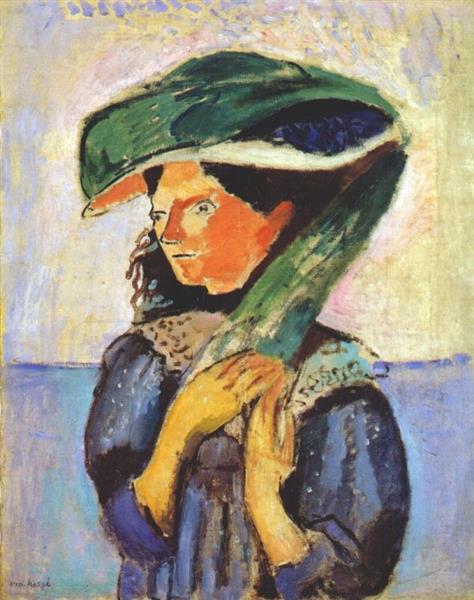Description
"Margot" (1906) by Henri Matisse is presented as an emblematic work that encapsulates the artist's stylistic evolution and his bold exploration of color and form. This painting falls within Matisse's Fauvist period, a movement he co-founded, characterized by the use of vibrant colors and simplified forms to express emotions rather than to represent objective reality.
The central figure of "Margot" is a young woman, named in the title of the work, whose identity has been the subject of speculation among critics. Her face is delineated with a firm and confident stroke, a common feature in Matisse's works from this era. The figure sits with an air of relaxed introspection, showing a serene and contemplative expression. Her posture exudes a sense of stillness and harmony, accentuated by the colors that surround her.
The use of color in "Margot" is exceptionally daring. Matisse employs vibrant tones in contrast without seeking realistic shades. This is observed in Margot's skin color, which deviates from natural flesh tones in favor of a more expressive palette. The saturated reds, greens, and blues that dominate the composition create a powerful and emotionally resonant visual effect. These colors, applied with visible and energetic brushstrokes, reflect the Fauvist influence and Matisse's rejection of traditional shading techniques and naturalistic representations.
The composition of the painting is distinguished by its apparent simplicity and balance. Margot occupies the center of the canvas, with her figure standing out against a background of abstract shapes and flat colors. The absence of detailed spatial context diverts attention entirely to the subject, allowing color and form to convey the artist's message. The background of the work also deserves attention with its geometric patterns and fluid lines, creating a sense of subtle dynamism and movement.
"Margot" exemplifies Matisse's mastery in synthesizing emotion and technique. The economization of details and chromatic boldness are characteristics that can also be observed in other works from his Fauvist period, such as "The Joy of Life" (1905-1906) or "Portrait of Madame Matisse (The Green Line)" (1905). In these works, Matisse consistently evokes a powerful emotional response through seemingly simple means.
The history of "Margot" in particular is not illuminated by anecdotes or specific data in the literature, but the style and techniques Matisse employs in this work are widely recognized and celebrated. The universe of color and form that Matisse creates in "Margot" represents his unwavering dedication to artistic innovation and his unique ability to convey the essence of his artistic vision through the play with the most fundamental elements of art.
In summary, "Margot" (1906) is not only a testament to Henri Matisse's stylistic transition but also one of the purest manifestations of his visual language. The painting invites viewers to immerse themselves in a world where color rules and form guides emotion, reminding us of the eternal power of art to transcend the barriers of time and space.

